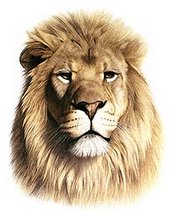↓B. Home. Lezione en.0: 01 ↔ 03.
The
Definite articles
As mentioned in Basics 1, German nouns have one of three genders: feminine, masculine or neuter.
While they sometimes correspond to a natural gender ("der Mann" is male), most often the gender will depend on the word, not on the object it describes. For example, the word "das Mädchen" (the girl) ends in "-chen", hence it is neuter. This is called grammatical gender.
Each gender has its own definite article. Der is used for masculine nouns, das for neuter, and die for feminine. Later in this course you will learn that these might be modified according to "case".
While they sometimes correspond to a natural gender ("der Mann" is male), most often the gender will depend on the word, not on the object it describes. For example, the word "das Mädchen" (the girl) ends in "-chen", hence it is neuter. This is called grammatical gender.
Each gender has its own definite article. Der is used for masculine nouns, das for neuter, and die for feminine. Later in this course you will learn that these might be modified according to "case".
| gender | definite (the) | indefinite (a/an) |
|---|---|---|
| masculine | der Mann | ein Mann |
| neuter | das Mädchen | ein Mädchen |
| feminine | die Frau | eine Frau |
Conjugating verbs
Here are the conjugation tables from "Basics 1" (where you can find a more detailed explanation) again.
trinken (to drink)
sein (to be)
trinken (to drink)
| English person | ending | German example |
|---|---|---|
| I | -e | ich trinke |
| you (singular informal) | -st | du trinkst |
| he/she/it | -t | er/sie/es trinkt |
| English | German |
|---|---|
| I am | ich bin |
| you (singular informal) are | du bist |
| he/she/it is | er/sie/es ist |
Generic vs. specific (German is not Spanish or French)
Just like in English, using or dropping the definite article makes the difference between specific and generic.
I like bread = Ich mag Brot (bread in general)
I like the bread = Ich mag das Brot (specific bread)
A good general rule is to use an article when you would use one in English. If there is none in English, don't use one in German.
There are some slight differences when using a few abstract nouns, but we'll see about that later.
I like bread = Ich mag Brot (bread in general)
I like the bread = Ich mag das Brot (specific bread)
A good general rule is to use an article when you would use one in English. If there is none in English, don't use one in German.
There are some slight differences when using a few abstract nouns, but we'll see about that later.
Bottom. Top↑







Nessun commento:
Posta un commento